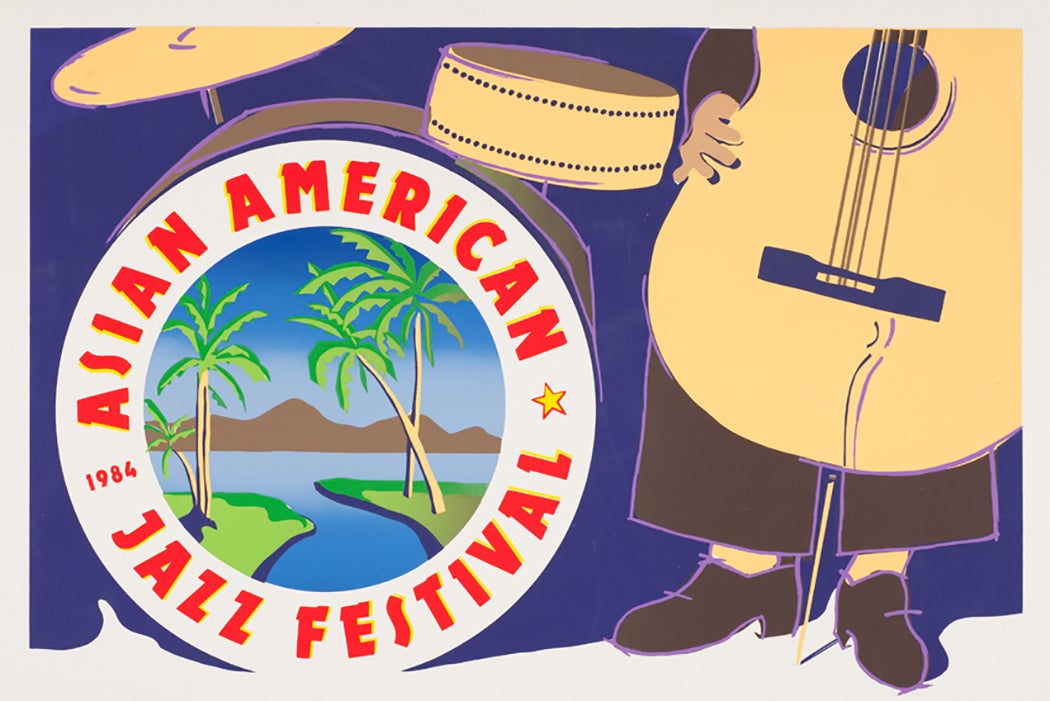What does political empowerment sound like? For some musicians in the 1970s and ’80s, the answer was jazz. As ethnomusicologist Susan M. Asai explains, for Asian American musician-composers, this period was influenced “politically and musically [by] Black Nationalism,” which itself was strongly associated with Free Jazz. The art form “began to chart new musical territory that embodied [Asian Americans’] own political and cultural consciousness.”
Many Asian Americans, enduring their own history of discrimination, segregation, and what Asai terms an “almost one-hundred-year period of racist restrictions” in the US, looked to Black politics and forms of cultural expression. The influential 1960s Black Arts Movement served as a framework for some Asian American artists, including musicians.
As Asai explains, a “shared history and experience of discrimination and resistance served as a foundation for a pan-Asian identity that would unite rather than divide distinct ethnic groups.” Organizations like the Asian American Political Alliance and Asian Americans for Action formed, aligning themselves with antiwar and Black liberation groups. These “created the momentum for Asian Americans to forge their own way, proclaiming their ancestral past and raising their sense of worth in countering their emasculation of being ‘other.'”
All of the conditions were right for a musical movement to take inspiration from Black freedom struggles and make it reflect Asian American experiences. Through free jazz, an avant-garde subgenre that breaks with convention, artists began experimenting with music influenced by both tradition and modernity. It was a chance to infuse the music with the political, with the historical, with the cultural. As Asai notes, “The improvisational freedom offered in Free Jazz is key to understanding the cues Asian Americans took from African American musicians.” Though they may have been influenced by earlier movements, free jazz gave musicians an opportunity to “cultivate their own musical landscape.”
So what did that landscape look like? What did it sound like?
Fred Ho, a saxophonist, composer, and activist, was active in both Asian American and Black American liberation groups. In addition to using jazz foundations in his work, he also used Asian folk melodies and traditional instruments. As he explained in an article in Leonardo Music Journal, “the ‘Asian American jazz’ movement saw as the focus of our music/cultural work to help catalyze Asian American consciousness about our oppression and need to struggle for liberation.” As Ho writes, his work “spoke to the Asian American struggle and celebrated the resistance of Asian workers in the U.S.”
Weekly Newsletter
Similarly, pianist Glenn Horiuchi was influenced by the Black Panthers and Malcolm X, later joining the League of Revolutionary Struggle. He also advocated for reparations for Japanese internment. Musically, those influences resulted in pieces like Poston Sonata (1991), which combines jazz and the Japanese shamisen, in remembrance of Japanese Americans held in the Poston internment camp. As Horiuchi noted in an interview, he wanted his music to capture the strength of the first generation of Japanese immigrants and “link that with, as much as a Japanese American can, the music that came out of the Black Liberation Movement.”
Liberation among Asian American jazz musicians took on its own life, its own shape, and its own sound. It was a conversation, too, as Asai points out: “an exchange of ideas took place among certain artists from both cultures.”







